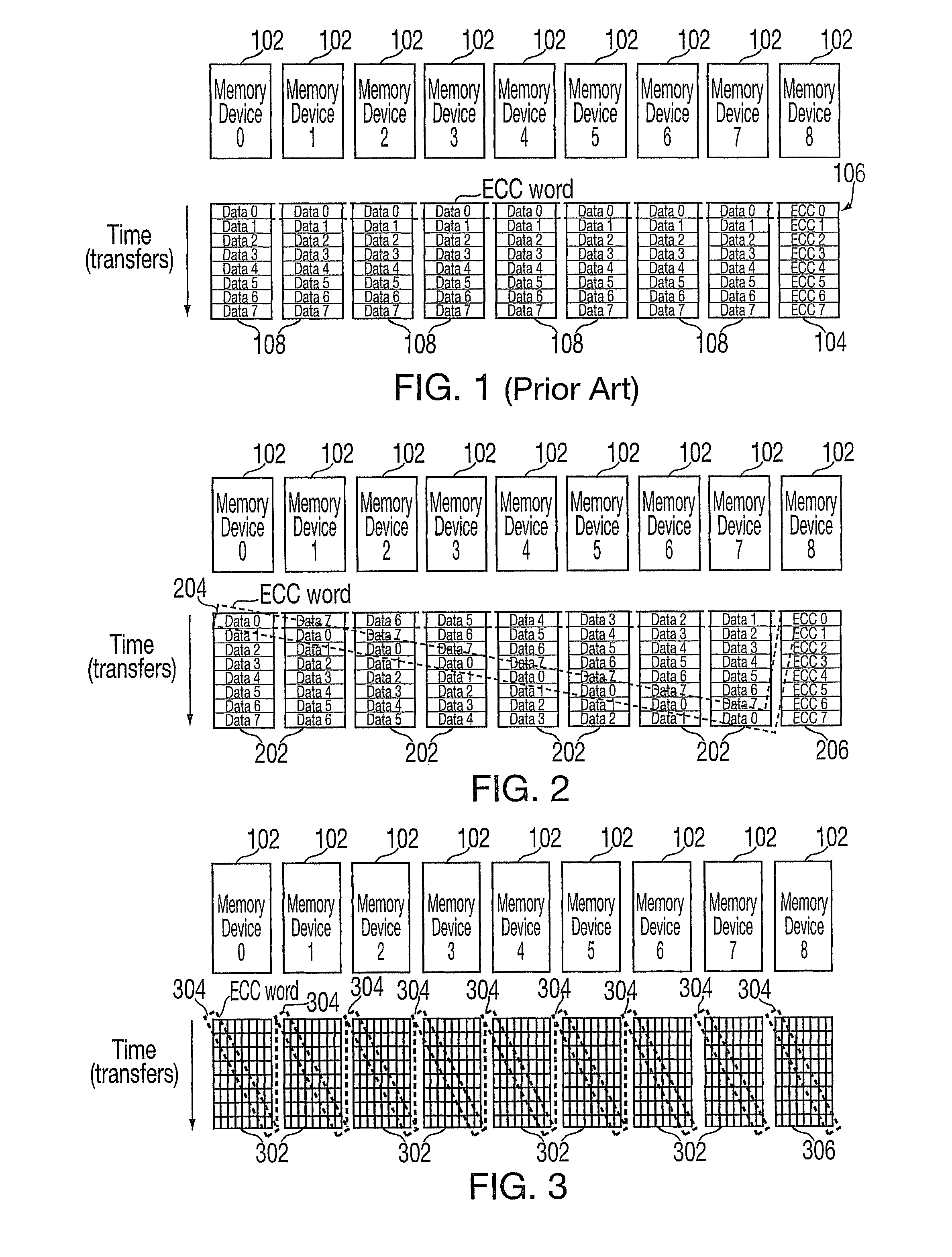System and method for providing error correction and detection in a memory system
a memory system and error correction technology, applied in error detection/correction, instruments, coding, etc., can solve the problems of unfavorable data reading, fast zero error rate due, dramatic increase in failure rate, etc., to reduce the probability of uncorrectable and undetectable errors in the memory system, facilitate data reading, and facilitate error detection and correction.
- Summary
- Abstract
- Description
- Claims
- Application Information
AI Technical Summary
Benefits of technology
Problems solved by technology
Method used
Image
Examples
Embodiment Construction
[0019]The invention relates to error correction codes (ECCs) and a manner of mapping an ECC in a high-speed memory system comprised of multiple memory devices.
[0020]FIG. 1 is an example of a conventional ECC word mapping, where the ECC is applied and calculated for data in the same transfer (beat). FIG. 1 depicts nine memory devices 102, a data access with a burst of eight including data bits 108 and ECC bits 104, and an ECC code word 106 that spans a single transfer. If there is a strong correlation between bit errors across different devices during the same transfer (as described earlier), this method will result in a high likelihood that the available ECC will be unable to correct, or even detect (due to the limited strength of the ECC in detecting multiple errors) the existence of the multiple errors, which may result in uncorrectable or even undetectable errors. At a minimum this results in a system failure, at a maximum this results in data corruption that is not detected by t...
PUM
 Login to View More
Login to View More Abstract
Description
Claims
Application Information
 Login to View More
Login to View More - R&D
- Intellectual Property
- Life Sciences
- Materials
- Tech Scout
- Unparalleled Data Quality
- Higher Quality Content
- 60% Fewer Hallucinations
Browse by: Latest US Patents, China's latest patents, Technical Efficacy Thesaurus, Application Domain, Technology Topic, Popular Technical Reports.
© 2025 PatSnap. All rights reserved.Legal|Privacy policy|Modern Slavery Act Transparency Statement|Sitemap|About US| Contact US: help@patsnap.com



